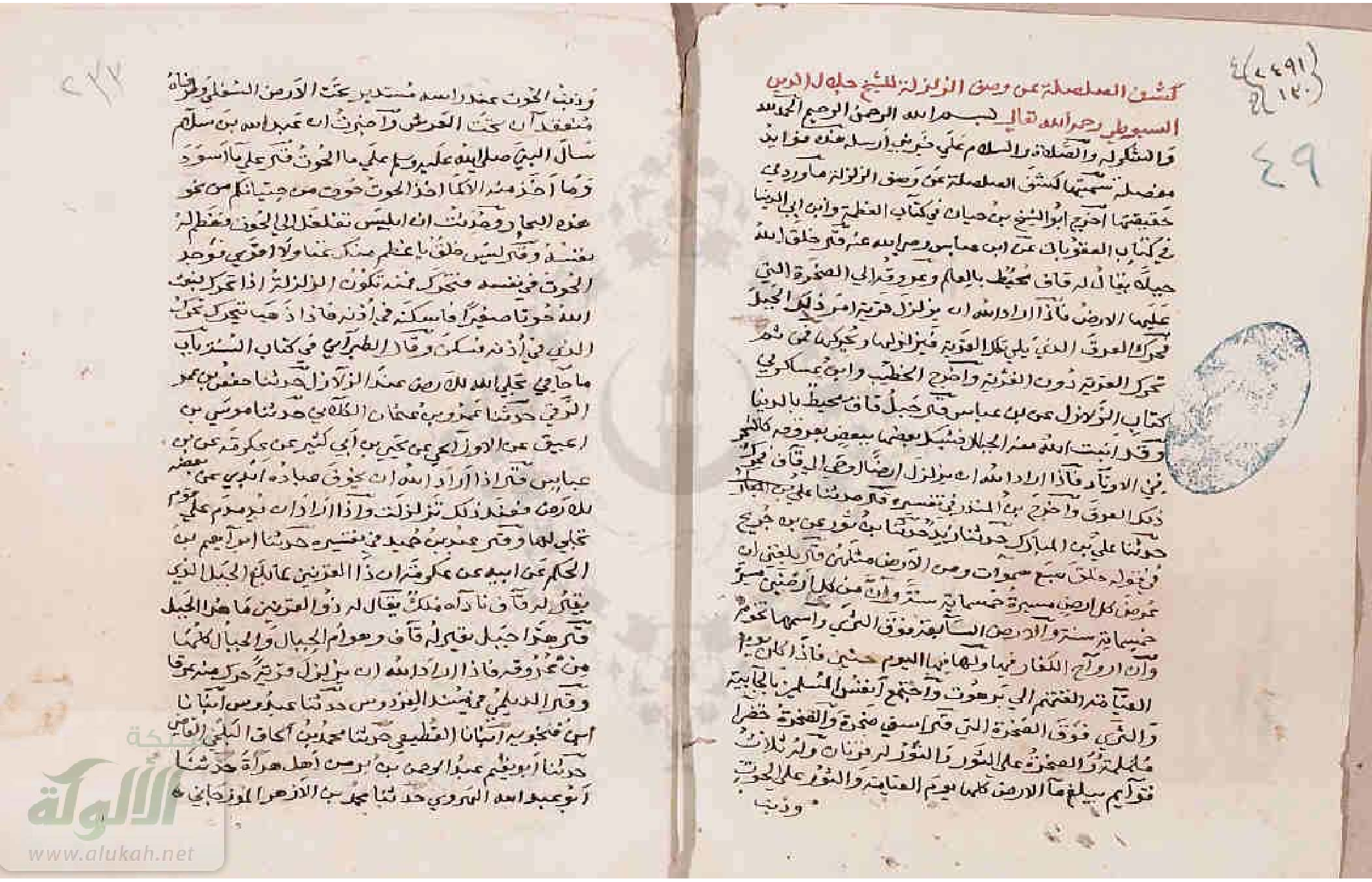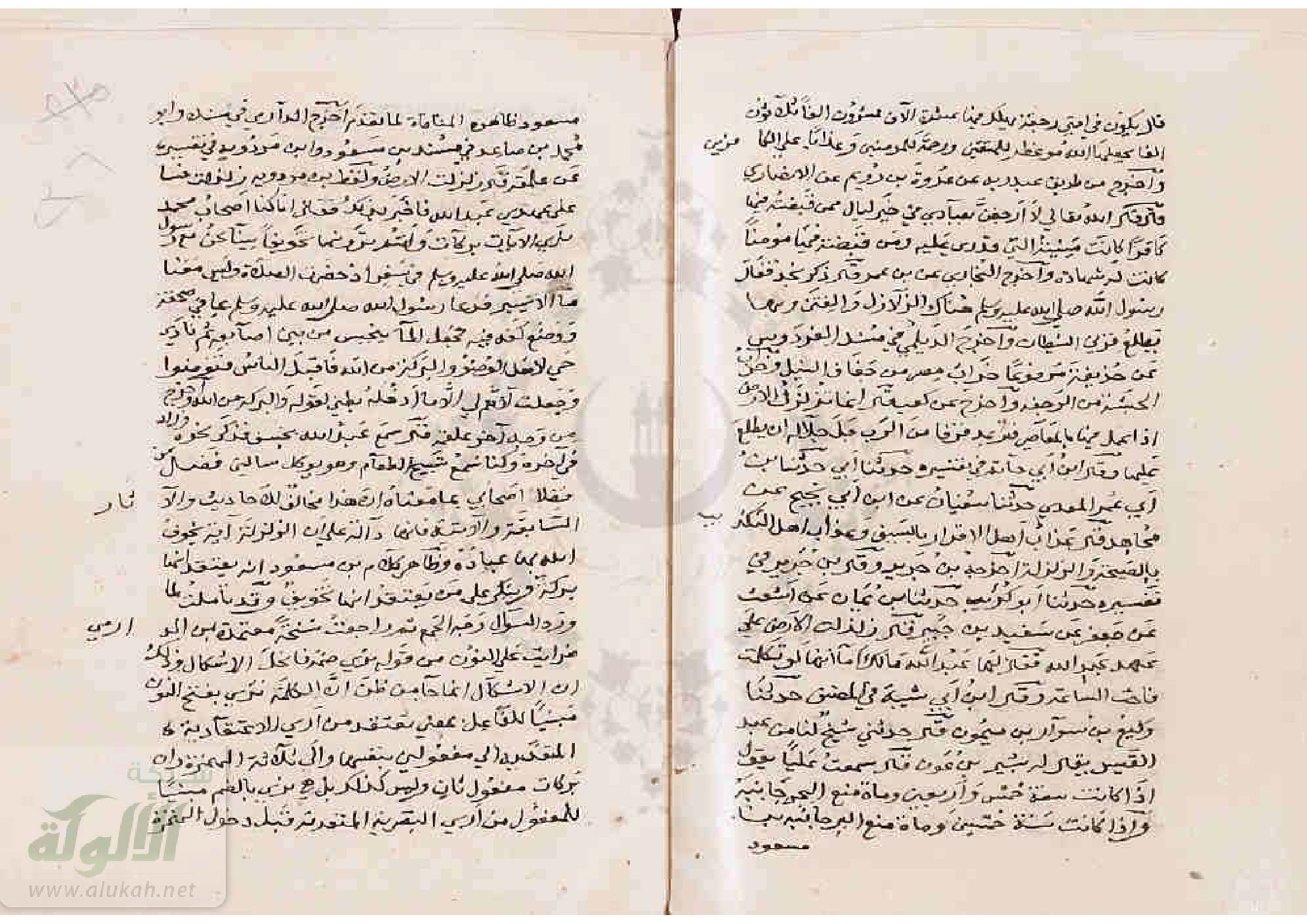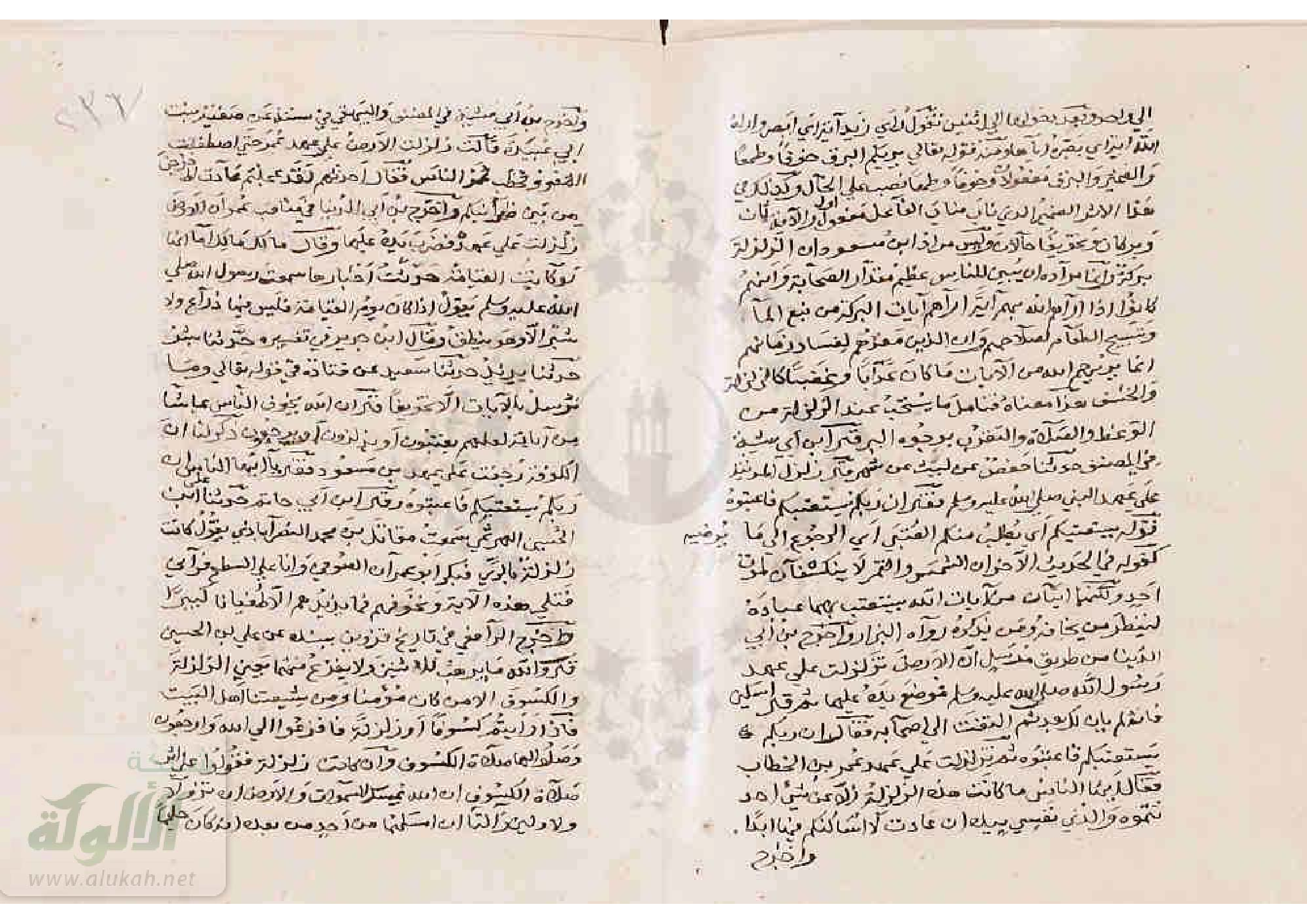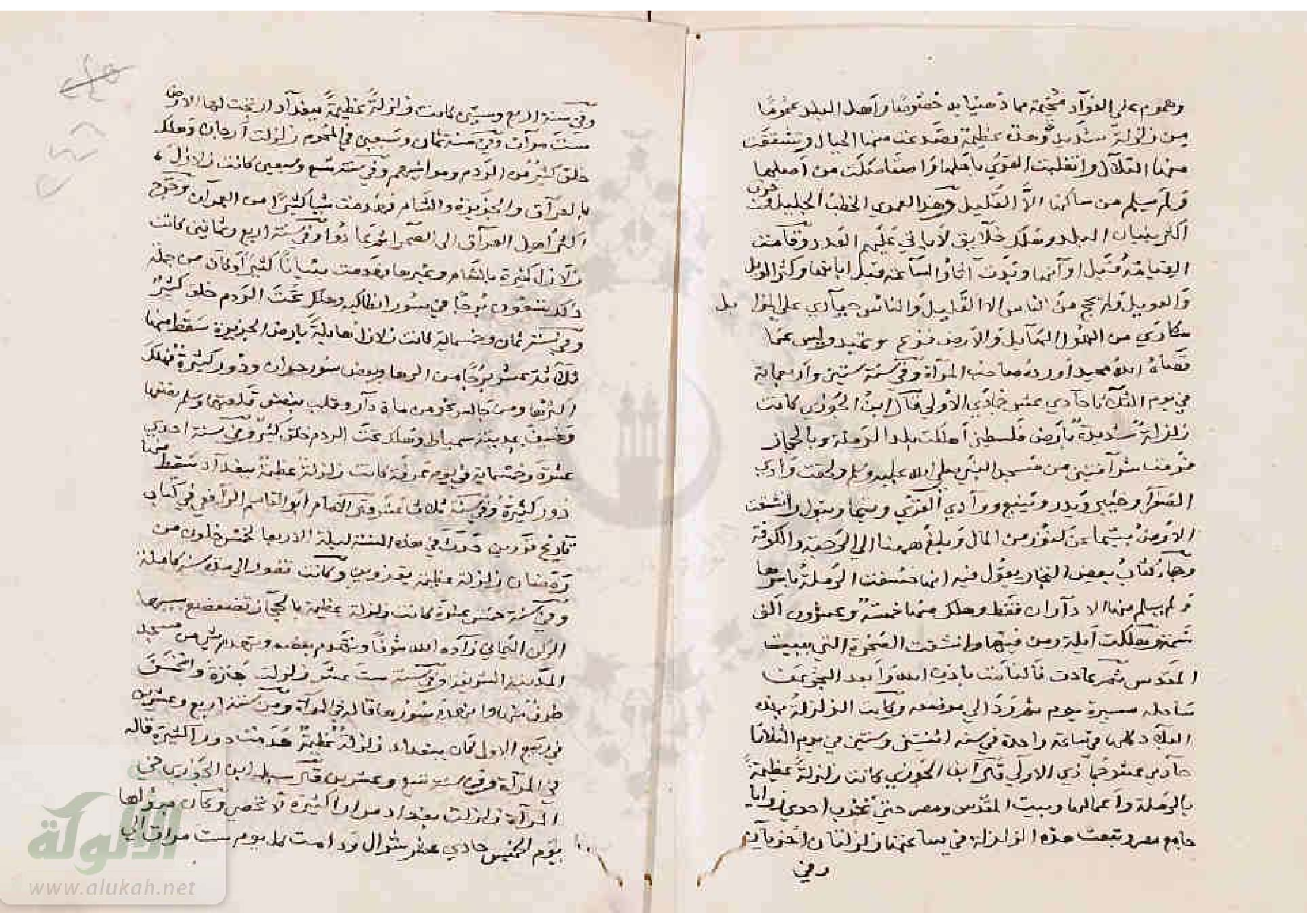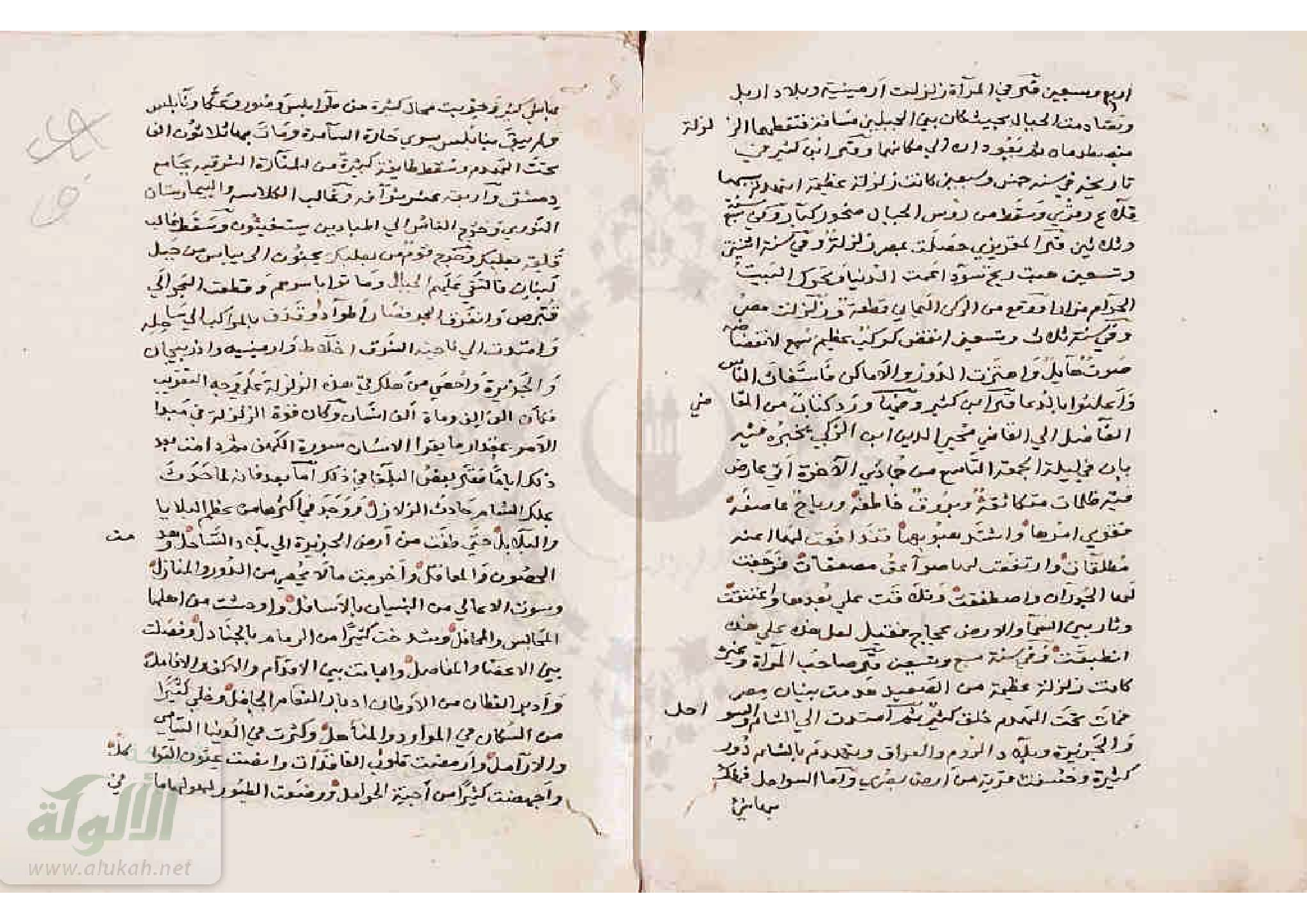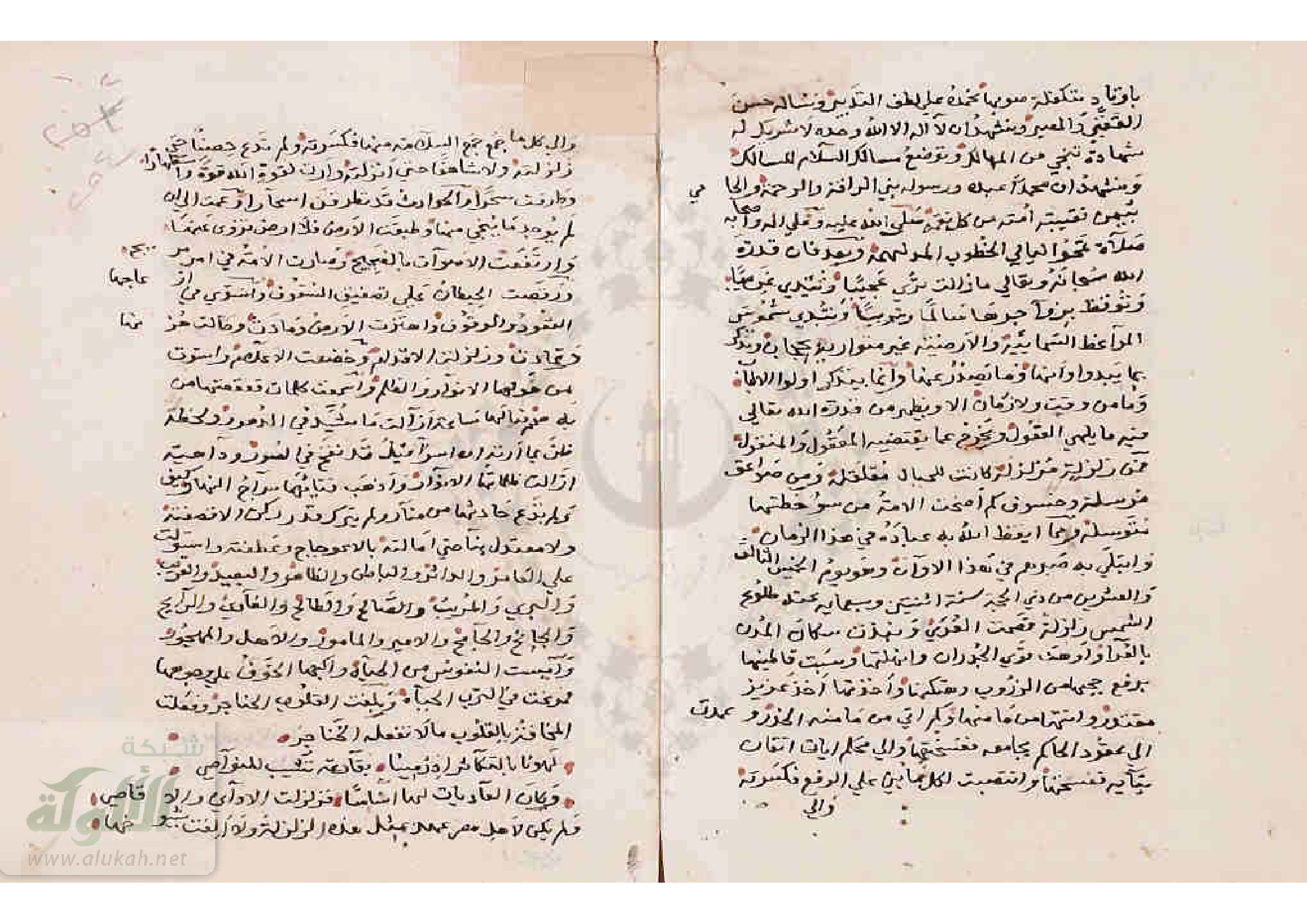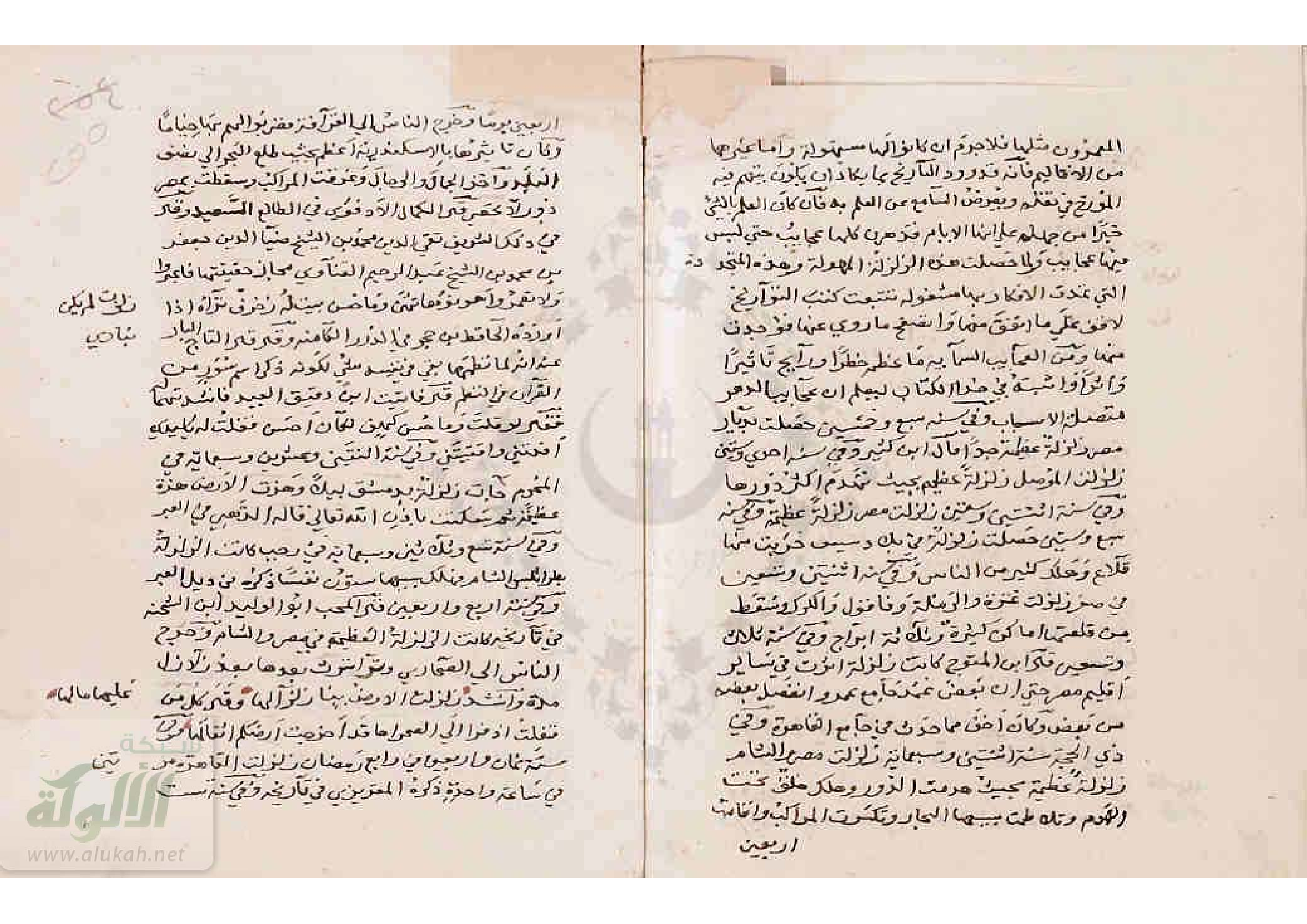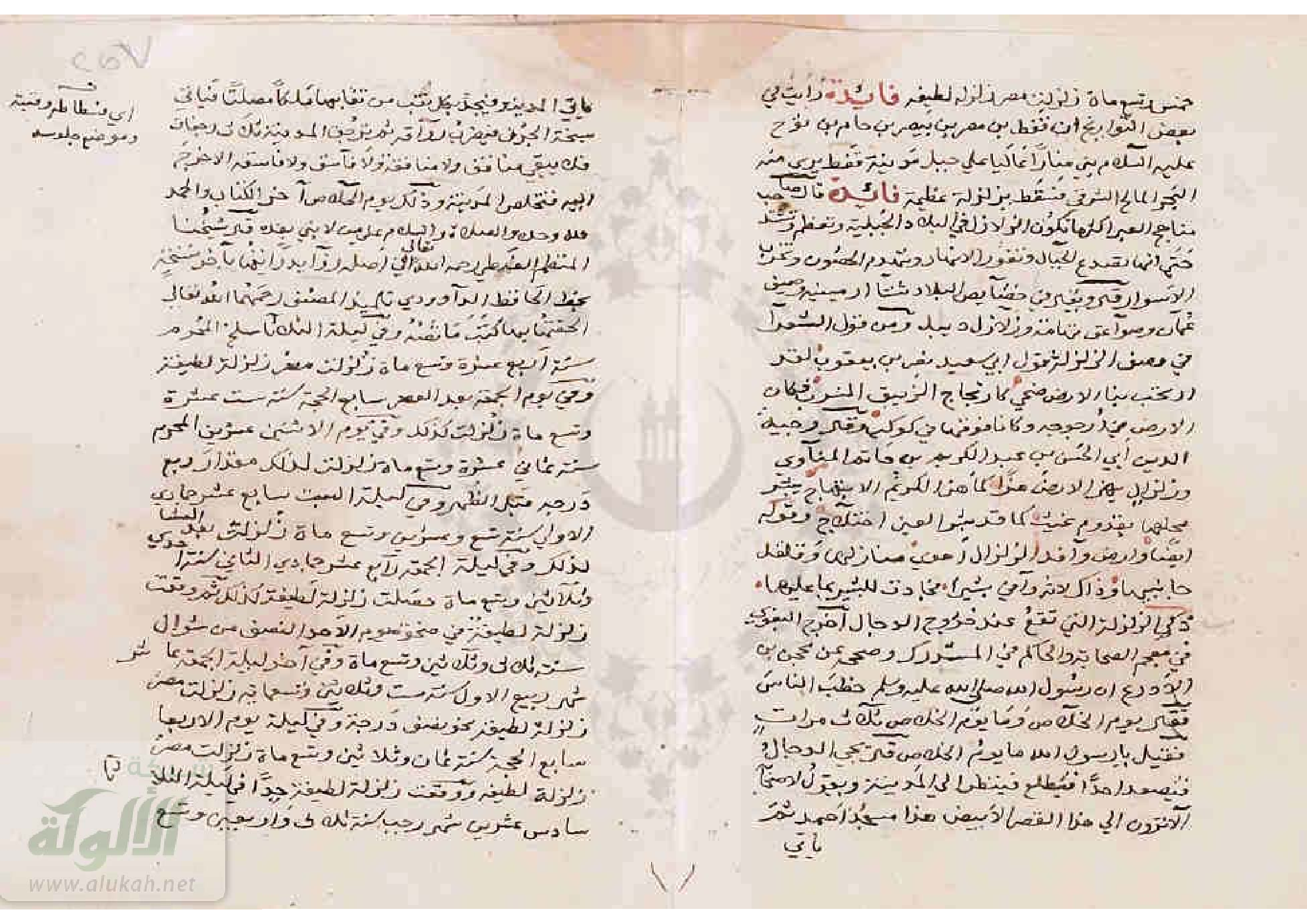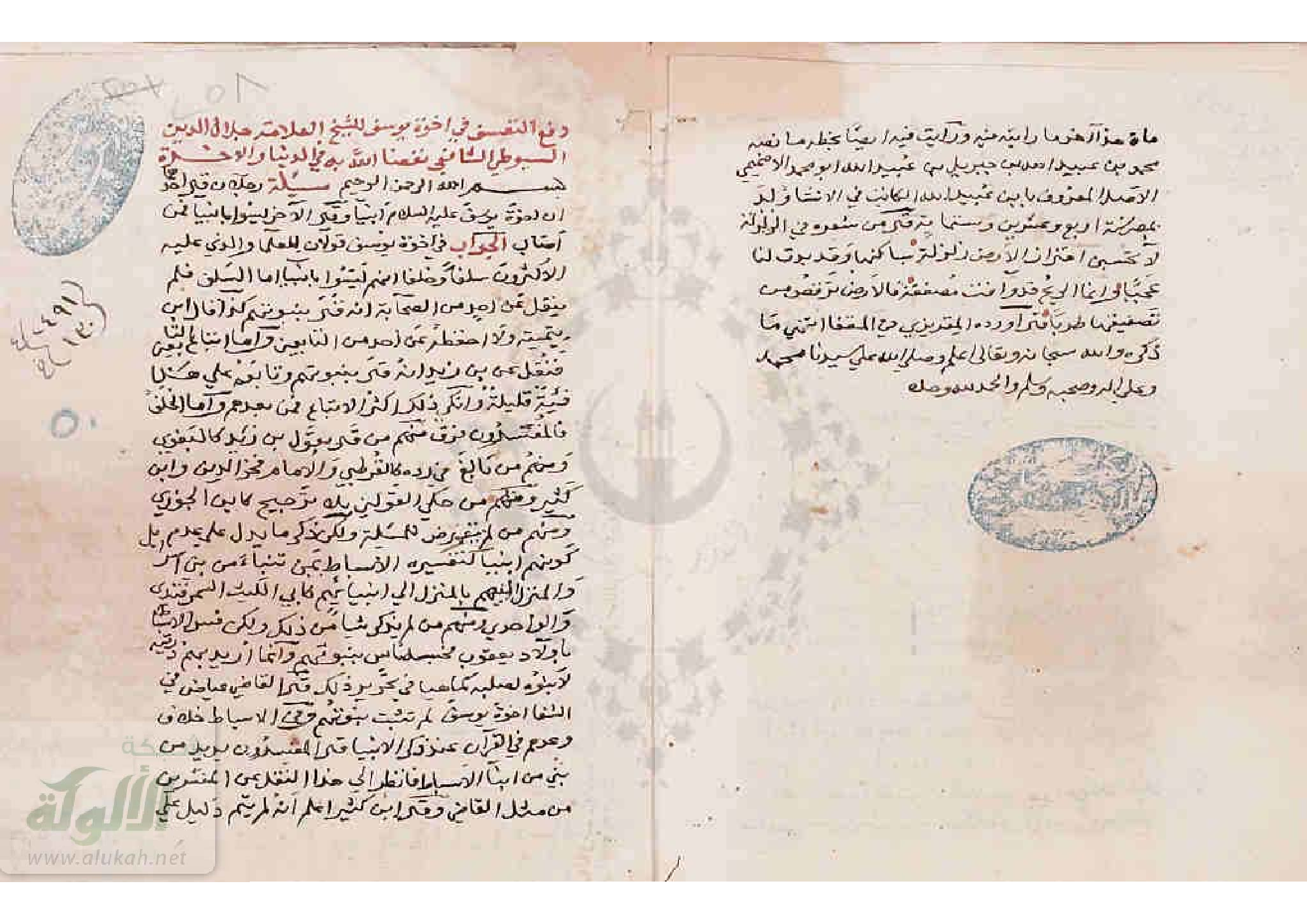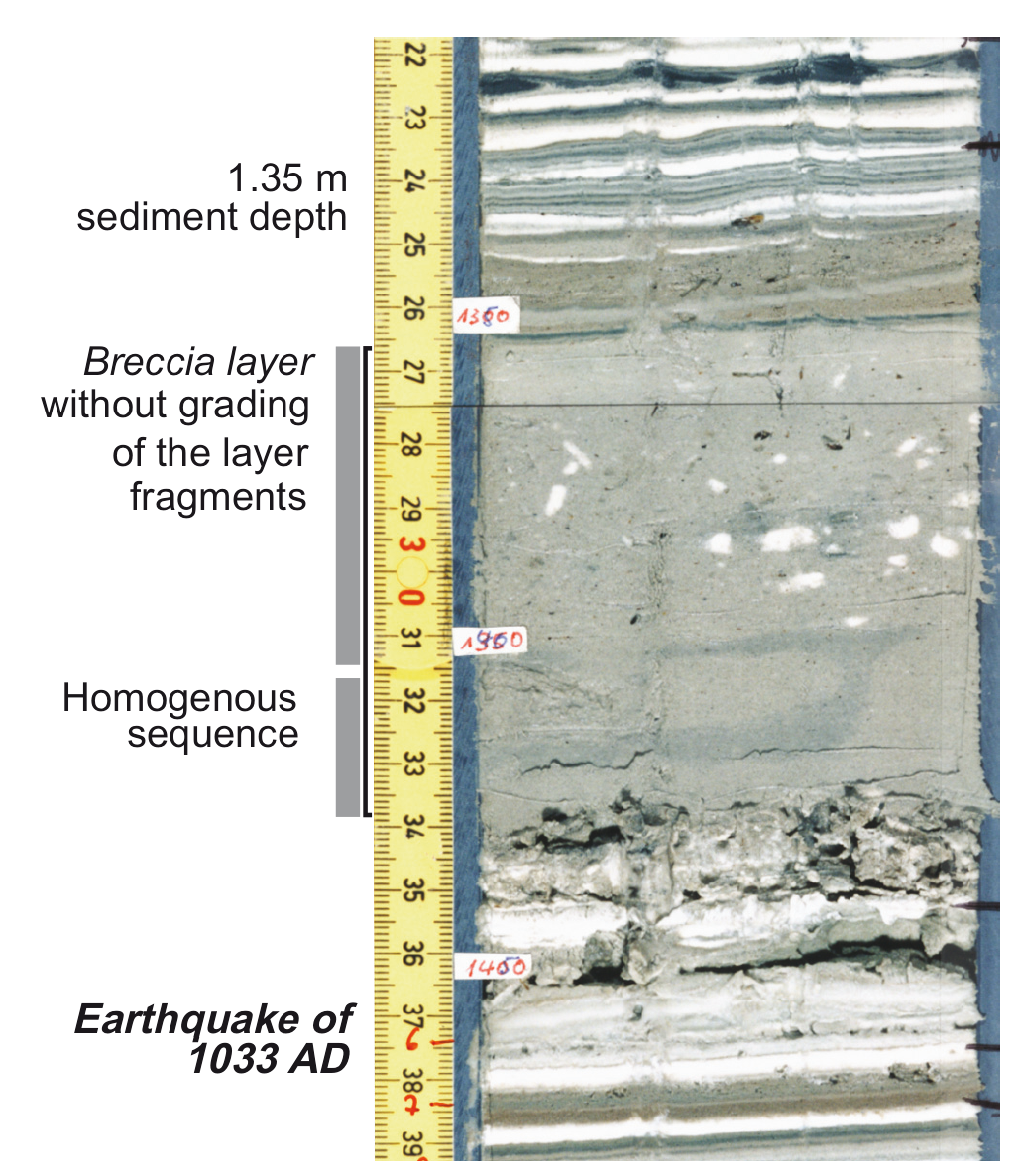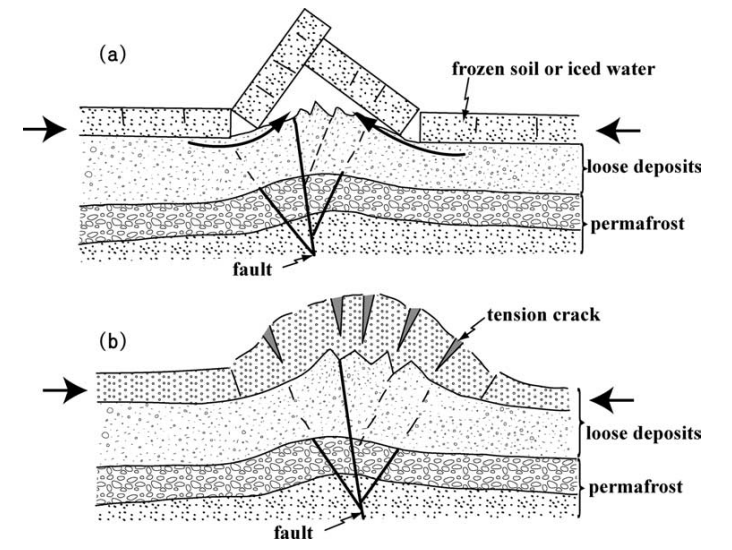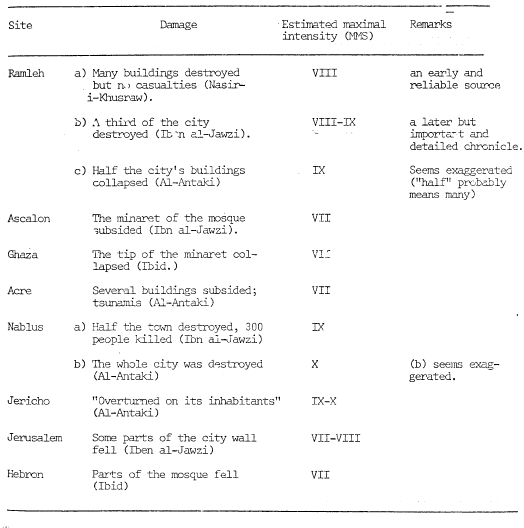[...] they went out from their houses into the streets because they saw the walls bending and yet intact, and the beams become separated from the walls and then revert to their former position. Strong buildings collapsed and new houses were pulled down. Many died in the ruins, for they could not escape. All went out from their dwellings, leaving everything behind. Wherever they turned they beheld God's powerful deeds. Walls crashed together and collapsed. Those that remained were shaky and rent. Nobody resided within them, for their owners feared they might fall down on top of them even before daybreak. Even to describe a part of the happenings, the hand would weary. Also the mind is distraught from what the eye saw and the ear heard. The verse has been fulfilled, "Behold the Lord empties out the land and lays it waste, distorts its face and scatters its inhabitants". He that is prudent will understand. For all were alike, like people like priest, like servant like master, when they left their places and sought refuge to save their lives. Many resigned themselves to the (Divine) judgment, reciting several verses (from Jer. 10.10, Ps. 104. 32, Job 9.6, Amos 9.5, Hos. 4.3, Nah. 1.6). This event took place on Thursday, 12 Tevet, suddenly before sunset, affecting not only Ramla but the whole of Filastin, from fortified city to open village, all the fortresses of Egypt [i.e. subject to Fatimid rule] from the sea to Fort Dan [Baniyas], all the cities of the south (Negev) and from the Mount to Jerusalem (and its surroundings), to Shehem [Nablus] and its villages, Tiberias and its villages, the Galilean mountains and the whole of Palestine'. 'Those that travelled on the high roads relate the mighty acts of the living God. They say "We have seen the mountains shake, leap like stags, their stones broken into pieces, the hillocks swaying to and fro, and the trees bending down". In some places the waters in the cisterns reached the brim. The tongue is inadequate for the tale. Thanks to God's mercy it happened before the day was gone, when people could see and warn each other, for had it been in the night when everybody was asleep, only a few would have been saved. But His mercies are many and his kindnesses numerous. Though He passed judgment, He will not utterly destroy. He, moreover, in His goodness brought out thick clouds and heavy raindrops fell. Two great rainbows appeared. One of them split into two and fire was visible from the south west. Thereupon the earthquake took place, the like of which there had not been since early times. On that night (the earth) shook again. All were in the streets, men, women, and children, imploring God, the Lord of the spirits, to quieten the earth and set it at rest and save both man and animal. On Friday, as well as on the following night, the shocks recurred. All were terrified and fear stricken. Earth and its inhabitants were molten (in fear). They all wept and cried with a loud voice, 0 merciful One, have mercy and withdraw the intended punishment. Do not enter upon judgment. In anger remember to be merciful and pay no heed to (our) former sins. All are trembling, sitting on the ground, startled every moment, shaking and swaying to and fro. For eight days the mind has not been satisfied and the soul is not at rest.
What could the writer (of this letter) do (but) address the people to declare a fast, summon a solemn assembly, go out to the field, the cemetery, in fasting, weeping and lamentation, and recite "Tear your hearts, and not your garments, and return to the Lord your God, etc. Come, let us return to God, etc. And let us ask for mercy. Who knows, (perhaps) He will retract and repent, etc. Perhaps He will go back from His fierce anger, so that we perish not". (God) magnified the miracle in that for all the days which the people spent in the streets and in the open, no rain fell. Also, the governor of the city, with the men in the Caliph's employ, pitched tents for themselves outside the town, and are still there. May the Lord, the God of the universe, look down mercifully upon his world, have pity on (His) creatures, save man and animal, and have compassion on babes and sucklings and those who know not how (to distinguish) between right and wrong, so that we perish not. May He deliver you from this and the like, protect you from all harsh judgments, hide you in his tabernacle on the day of evil, and shelter you in the protection of His wings. May He exalt you and may your good acts, kindnesses, and righteous deeds stand you in good stead. May he make you dwell securely and safe from evil fear, and may you be at peace, your houses and all that belongs to you be at peace. Receive ye peace from the Lord of Peace". [trans. based on that in Mann, 1920].
- from Gil (1992:399-400)
[596] This earthquake and its attendant horrors seem to be the climax of a period beset with afflictions and distress. In contrast to the comparatively tranquil state of security, an endless series of calamities befell the country, most of which stemmed from the scarcity prevalent in Egypt. This was the situation for some twenty years, in the fifties and sixties of the century, until the Turko-Saljuq conquest.
53. See 209 and the notes there; Mann, Jews, I, 156f, bases his discussion on a slightly erroneous reading, and therefore arrived at incorrect conclusions. Nasir Khusraw (text), 19 ; (translation), 64. The lease of the ruin in Ramla, see: 229 . See further: Ibn al-Athir, Kamil , IX, 438; Ibn al-Jawzi, Muntazam, VIII, 77; Ibn Kathir, Biday a, XII, 36; Sibt ibn al-Jawzi, Mir’dh (MS Munich), 105a; Maqrizi, Itti‘dz , II, 181 (destroyed: half of Ramla, Jericho, and most of Acre); Ibn Taghri Bardi, IV, 279; ‘Ulaymi, 269; the earthquake is also mentioned in Cedrenus (Bonn), II, 511. The matter of the reconstruction of the walls of Jerusalem in 1033 and the earthquake of that year, is discussed by Prawer in his paper on the topography of Jerusalem on the eve of the Crusaders’ conquest; see Crusade (ed. Edbury), 2. He assumes that in the year 1033, the walls of jerusalem began being built according to ‘a new line of fortifications’, and that new walls were built in Jerusalem as a result of the earthquake of 1033. In Yahya ibn Sa‘id’s account, he finds this is ‘well attested’. He also finds proof there that the church on Mount Zion was left outside the walls, and also, according to him, that the Jews ‘found themselves outside the city walls and moved to the north-eastern part of the city’. Let us see what is really written in Yahya ibn Sa‘Id (ed. Cheikho, p. 272):
Al-Zahir began to build in this year [AH 424, which began on 7 December 1032, that is, coincided more or less with 1033] the wall of the noble city of jerusalem, after having built the wall of Ramla. Therefore those in charge of building [the wall] destroyed many churches in the vicinity of the town and took their stones for the wall; and they also intended to destroy the church of Zion and other churches in order to take their stones for the wall; and a terrible earthquake occurred the likes of which had never been known, at the end of Thursday, 10 Safar of the year 425 [the 4th of january AD 1034; the correct date, according to 209 : 5 December AD 1033, which was 10 Mubarram AH 425]. The earthquake caused the collapse of half the buildings in Ramla, and some places in its walls, and an enormous number of its people died. The city of jericho turned upside down with its people, as did Nabulus and nearby villages. Part of the chief mosque (jami') of jerusalem and monasteries and churches in the region collapsed; the buildings fell also in Acre and a number of people died there, and the water of the sea withdrew from its port for some time, but afterwards returned to its place.Clearly the source does not say anything about a new line of walls in Jerusalem; it contains no ‘reliable evidence’ on the outlines of the wall; and there is no proof that the churches on Mount Zion remained outside the new line of the walls. On the absence of any evidence at all of a Jewish quarter in the north of the city in this period or of a transfer of the Jews of Jerusalem from the south of the city northward, see secs. 838-839.
| Year | Reference | Corrections | Notes |
|---|---|---|---|
| 6 December 1033 CE | Main shock - before sunset Thursday, 12 Tevet AM 4794 | none |
|
| night of 7 or early morning 8 December 1033 CE | Recurring shocks - the following Friday night/Shabbat | none |
- walls bending and yet intact
- beams become separated from the walls and then revert to their former position
- Strong buildings collapsed
- new houses were pulled down
- Many died in the ruins, for they could not escape
- Walls crashed together and collapsed
- Those [walls] that remained were shaky and rent
- mountains shake, leap like stags, their stones broken into pieces
- hillocks swaying to and fro
- trees bending down
- In some places the waters in the cisterns reached the brim
- Affecting not only Ramla but the whole of Filastin
- From fortified city to open village
- All the fortresses of Egypt [i.e. subject to Fatimid rule] from the sea to Fort Dan [Baniyas]
- All the cities of the south (Negev)
- from the Mount to Jerusalem (and its surroundings)
- Shehem [Nablus] and its villages
- Tiberias and its villages
- The Galilean mountains
- The whole of Palestine



